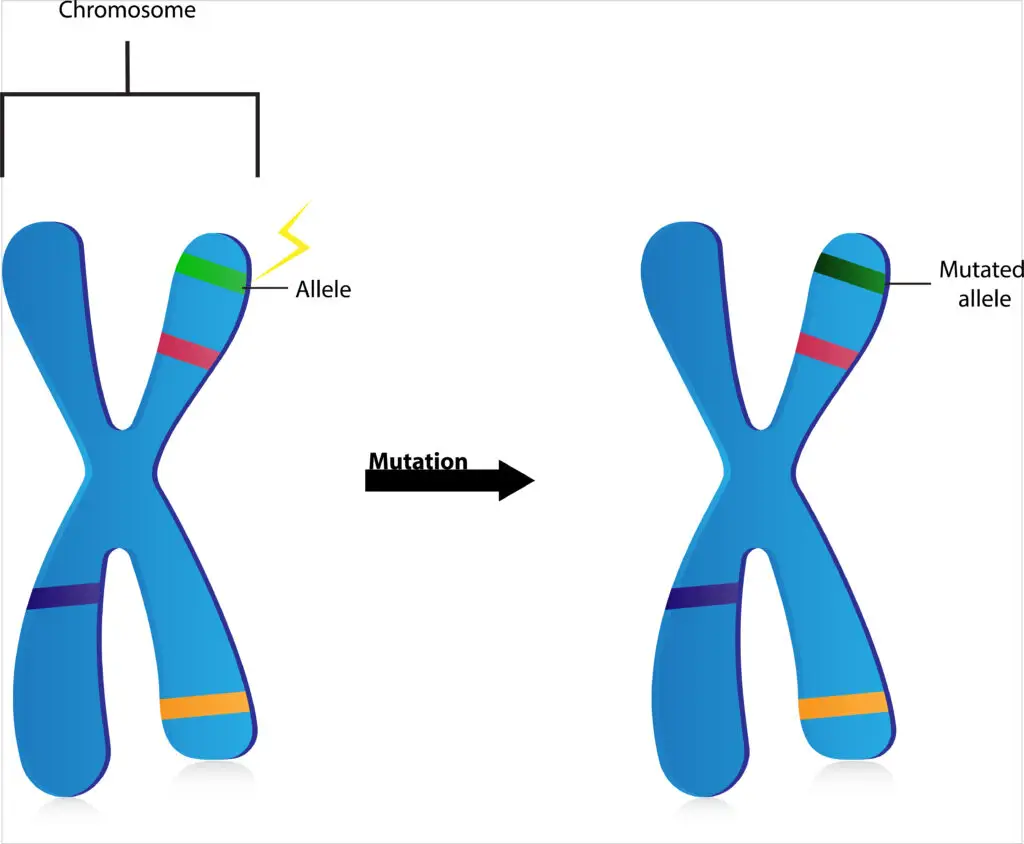Mutation
What is Mutated DNA?
A mutation is a change in the DNA sequence of a gene or chromosome, which can create new alleles and potentially alter an organism’s genotype and phenotype.
Causes of Mutations
Mutations happen when there’s a change in the DNA of a cell. These changes can happen for different reasons.
One cause of mutations is errors during cell division. When cells divide, they copy their DNA, but sometimes mistakes happen, causing a mutation. Though cells have ways to fix these errors, some changes slip through.
Environmental factors can also cause these changes. For example, too much exposure to sunlight can damage skin cells, leading to changes in DNA. Similarly, harmful chemicals, like those found in cigarette smoke, can cause mutations in lung cells.
Another cause of mutations is radiation. High levels of radiation, like from X-rays or nuclear exposure, can damage DNA and lead to mutations.
Finally, some mutations happen naturally over time. As people age, DNA in cells changes little by little, and some of these changes can lead to mutations.
So, mutations can be caused by copying mistakes, environmental factors, radiation, or simply aging. These changes can be small, but they sometimes have a big impact on how cells work.
Insertions, Deletions, and Frameshift
Insertions, deletions, and frameshift mutations are types of changes that can happen in DNA. Each of these changes affects how cells read genetic instructions, which can impact traits or even cause diseases.
In an insertion, extra DNA is added to the genetic sequence. Imagine reading a sentence, and suddenly, an extra word is added in the middle. This can change the meaning of the whole sentence. In the same way, an insertion in DNA can change how a cell reads a gene.
A deletion is the opposite. In a deletion, a piece of DNA is removed or “deleted” from the sequence. This is like removing a word from a sentence, which can also change the entire meaning. Deletions can make it hard for cells to understand the instructions they need to function properly.
A frameshift mutation happens when an insertion or deletion shifts the “reading frame” of the DNA. DNA is read in groups of three letters, or codons, which each code for an amino acid. If a change adds or removes letters, it shifts the grouping, causing the cell to misread the entire sequence. This is like adding or deleting letters in a sentence, scrambling the meaning of everything after that point.
These mutations—insertions, deletions, and frameshifts—can cause big changes in DNA instructions, leading to major effects on the body.
